Listed 36 sub titles with search on: Main pages for wider area of: "CORFU Prefecture IONIAN ISLANDS" .
AGII DOULI (Village) CORFU
Tel: +30 26630 94255
AGIOS GORDIOS (Settlement) CORFU
A relatively new settlement in a charming location with blue water and golden
sand. Rightly regarded as one of the island's finest beaches. From it you can
visit the picturesque village of Sinarades,
and Aerostato, which took its name from a coffee shop which seemed literally to
be hanging from the heavens.



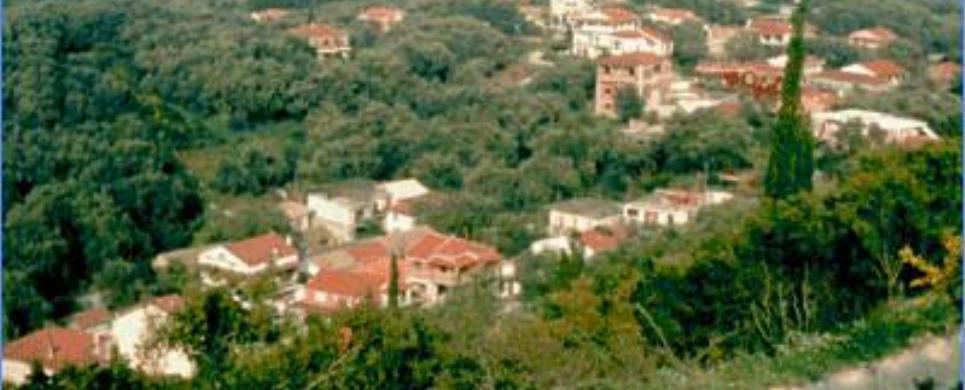
AGIOS MATTHEOS (Small town) CORFU
Tel: +30 26610 75142
A large, but charming village, with buildings both new and old. A paved road leads
to the Monastery of the Pantokrator at the top of the hill. Also at the top of
the hill is the Hole of Pelaos, a cave which is said to communicate with the sea.
In the fertile Gardiki district there is another Venetian castle, a twin to Aggelokastro.
It too belonged to the Despotate of Epirus. It is octagonal, with towers at each
corner. As happened elsewhere in Greece, the remains of ancient temples have been
incorporated into the walls of the castle.
ANTIPAXOS (Island) IONIAN ISLANDS
The only harbour on Antipaxi with level land on the shore in Agrapidia. Larger
vessels do not moor there, the water being too shallow. The only village, Agrapidia,
is set amid vineyards. The beautiful beaches of the island can be reached with
speedboats, which every day shuttle to and fro with tourists from Paxi.
There are some small tavernas where one can find food and relaxation after a day
at the beach. There is a stream of fresh water coming into the sea at Kaloroi
Beach. Antipaxi is a place for a quiet, peaceful holiday.
This text is cited December 2004 from the Ionian Islands Region General Secretariat URL below, which contains image
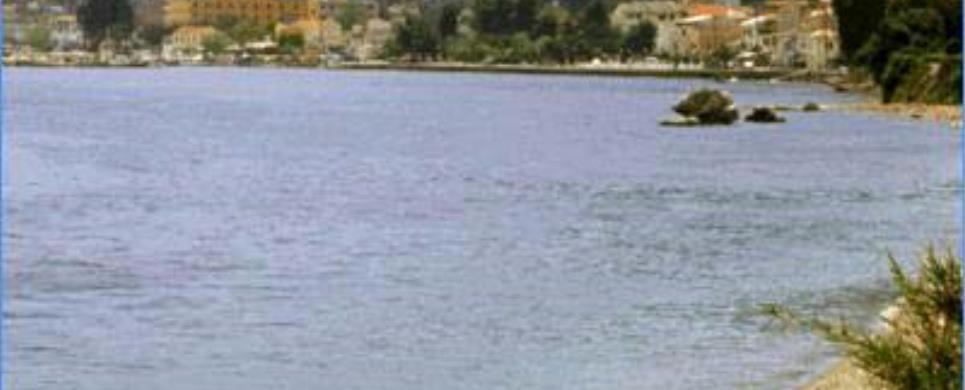
BENITSES (Small town) CORFU
Tel: +30 26610 72284
The coastal region of Benitses, very developed as a tourist area, with hotels,
tavernas, restaurants and nightclubs. Dense vegetation and beautiful beaches are
typical of the area. It is said that the gardens of King Alkinoos were situated
here. The springs providing waters to the Corfu Aqueduct are in the area, as are
ruins of Roman baths with mosaic floors.
CORFU (Island) IONIAN ISLANDS
Lovely Corfu, green and sun-drenched with its indented shores, a mythical,
fascinating island, first appeared on the scene at the dawn of time when she gave
refuge to Jason and the Argonauts on their return form their quest for the Golden
Fleece.
The description of "the island of the Phaeacians" in the
Odyssey, Odysseus’ last stop before arriving in his beloved Ithaca, is among
the most beautiful verses in world literature.
The incomparable beauty of the island, which appears from time to
time under other names, attracted a host of would-be conquerors. It also inspired
artists of every kind, who praised its charms in words and music or rendered them
in paintings, sculptures or engravings, spreading its renown to a wide public
over the past few centuries.
Literary figures such as Goethe, Oscar Wilde, Gerald and Lawrence
Durrell, the painters Alfred Sisley ad Edward Lear, immortalized with their pen
of palette Corfu's inimitable enchantment.
Even the great Napoleon was not unmoved by its beauty.
It was here that the sensitive empress Elisabeth of Austria
erected the Achilleion, the palace she viewed as the solace of her soul, while
according to Lawrence Durrell, Prospero’s island in The Tempest is modeled
on Shakespeare’s notion of Corfu.
Corfu was the birthplace of Greece’s
first governor, Ioannis Kapodistrias, of the composer Nikolaos Mantzaros (who
set to music Solomos’s "Hymn to Liberty", the country’s
national anthem), of the writers Polylas, Markoras, Mavilis, and Constantine Theotokis,
as well as being a source of inspiration to Greece’s national poet, Dionysios
Solomos. Today it continues to attract and delight its countless visitors.
(text: L. Briola)
This text (extract) is cited November 2003 from the Greek
National Tourism Organization tourist pamphlet (1993).
CORFU (Town) IONIAN ISLANDS
Corfu, one of the most beguiling cities in the Mediterranean, lies in the middle of the east coast of the island. It has grown up along a narrow strip of land that juts out into the sea. Its unique beauty is the product of the curious mixture of architectural styles left behind by the various occupying civilizations, blended into an especially harmonious whole.
The old city is the largest "living" medieval town preserved in Greece. Its streets wind and wader with no discernible order or object, its picturesque cobble-stone alleyways are interrupted by statues, graceful churches, Venetian tenements and fountains; the only way to see them is on foot.
The new section of the town is inseparable from the old, so that broad avenues with large piazzas can be found cheek by jowl with the cobbled lanes. Corfu's main square is the Spianada or Esplanade, rightly judged the most beautiful in Greece. Hotels combining the latest amenities with respect for their surroundings lie at various points round town. Some of the city's houses - two-storeys and higher - are in the English Georgian style, others display a strong French influence, while others are Italianate or in the island tradition. Arcades and arches decorate them, as do balconies with artfully designed wrought-iron railings.
Originally, Corfu was a fortress-state whose inhabitants lived within the walls of the Old (Sea) Fort built on the foundations of an earlier Byzantine castle that the Venetians reinforced and expanded in 1546. It is separated from the rest of the town by a moat, the Contrafossa, which used to be spanned by a moveable wooden bridge. The New (Land) Fort above the old harbour was erected between 1576 and 1588 to protect the town in the event of a Turkish invasion. The coast road with its graceful lampposts follows the medieval sea walls, the Mourayia. Its natural borders, the emerald sea on one side and lush greenery on the other, make it exceptionally lovely.
(text: L. Briola)
DASSIA (Settlement) CORFU
Dassia is a developed tourist area with big hotels and a variety of options open
to the visitor: blue waters and clean beaches, olive groves coming down right
to the water's edge. The gothic-style villa of Bibeli numbers among the sites
of interest to visitors.



ERIKOUSSA (Island) IONIAN ISLANDS
Tel: +30 26630 71703
Ereikoussa, an islet within the Diapontia island complex, is located northwestern of Corfu. It is a round island with a diameter of some 2 kilometers and is covered with olive and cypress trees. The permanent residents mainly specialize in olive-oil production, fisheries and tourism.
The highest peak of the island is Merovigli with a 120-meter altitude. Visitors are advised to ascend to the Anemomylos (windmill) site as it features a breathtaking view. On the south coast of the island, where the settlement of Porto is located, there is a huge shallow sandy beach that attracts many visitors from Corfu. From there, a path towards the north of the island, through the lush greenery, leads to the beach Prangini.
Popular beaches include Brakini that has shallow waters and is located on the east coast, and the old harbor Fyki, located on the west coast.
It is said that the island was named Ereikoussa due to the vast quantity of briar plants (reiki in Greek) on the island. The briar plant has a purple pink color, a characteristic smell and it blooms in October.
ERMONES (Settlement) CORFU
A seashore with steep rocks and icy-cold waters. This is said to be the place
where Nausicaa came with her friends to wash their clothes in the running waters
of the spring and so met Odysseus. The "Corfu Golf" is in this area.
There are still some traces of Neolithic remains to be seen in the vicinity.



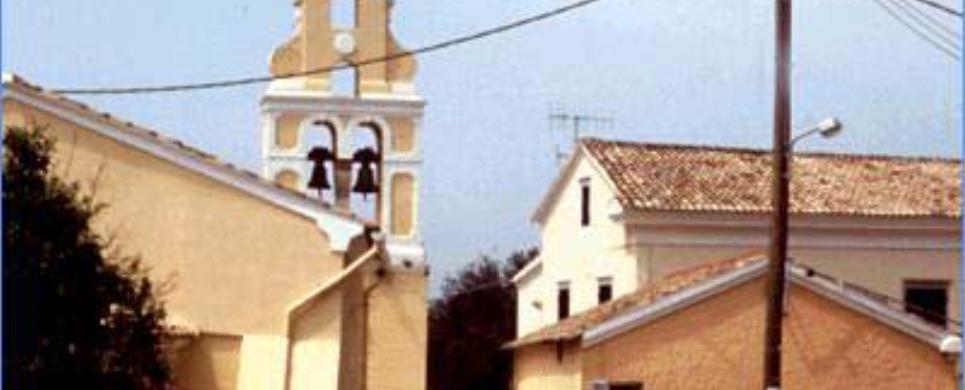
GASTOURI (Village) CORFU
The village of Gastouri is set amid beautiful scenery on a green hillside. Dominating
the hilltop is the Achillio, built for the Empress Elizabeth of Austria, the renowned
Sissy, in 1890-91 by the Italian architect Kapita. The Empress had a soft spot
for the Homeric hero Achilles, and so named her palace after him. The neoclassical
building is set amid magnificent gardens. The back part of the garden is dominated
by the statue of "Achilles Dying", a creation of the German sculptor
Herter. Some of Sissy's personal possessions are kept on the lower floor of the
palace. After her murder the Achillion was purchased by Kaiser Wilhelm II of Germany.
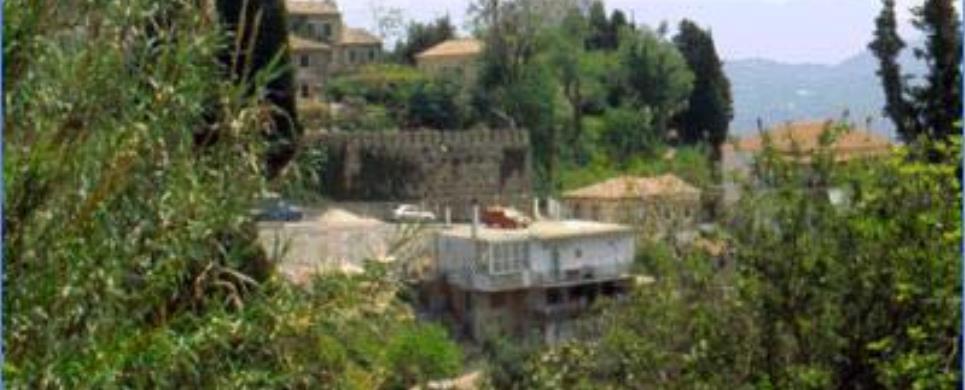
KAROUSSADES (Small town) CORFU
Tel: +30 26630 31311
KASSIOPI (Village) CORFU
A town built on the site of an ancient settlement. Kassiopi flourished during
the Roman period, chiefly on account of its geographic position overlooking the
sea pass. In ancient times there was a sanctuary to Zeus here, on the site now
occupied by the 16th century Panagia Kassiopitissa. The ruins of the town's castle,
dating from the 14th century, can be seen on the hill. A number of narrow streets
lead from the harbour to the town's beaches. Kassiopi is an ideal point of departure
for visitors wishing to explore all the northern part of Corfu.
This text is cited December 2004 from the Ionian Islands Region General Secretariat URL below, which contains image



KOULOURA (Settlement) CORFU
A little fishing port, which takes its name from the shape of its cove. The ruins of a building from the Venetian period can be seen here, formerly a residence belonging to the first governor of Modern Greece Ioannis Capodistrias.



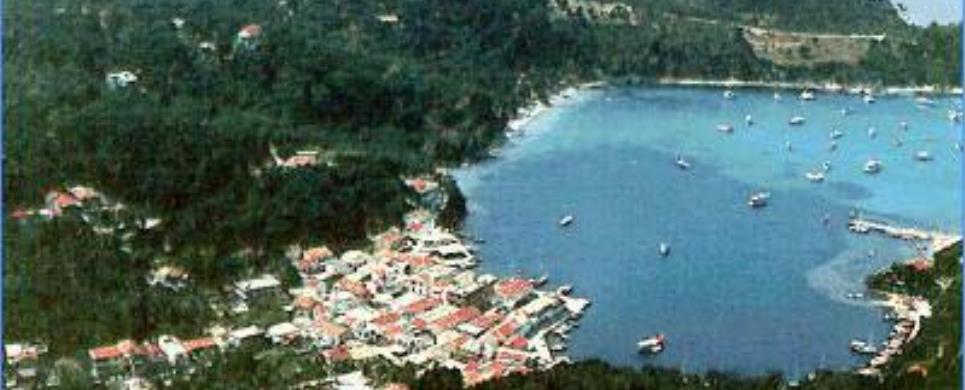
LAKKA (Village) PAXI
The village of Lakka took its name from its position. Its houses are built at
a low elevation and close to the sea. The view from the lighthouse is superb.
It is worth visiting the Ellinospito, a kind of fort, where the locals sought
refuge when pirates came to the island. Similarly of interest is the Ipapandis
Church, built in 1774. Renaissance elements can be seen in its ornamentation.
One could also visit the Sea Cave of Ipapandis, which is said to communicate with
the church and with the Grammatikos Mansion.
LAKONES (Village) CORFU
A typical Corfiot village on a green hillside. It is worth taking a walk to Bella
Vista, where the visitor can lounge in one of the charming coffee shops and admire
the view over the bay of Palaiokastritsa. If you like rambling outdoors you can
follow the steep path which will take you to Palaiokastritsa village.



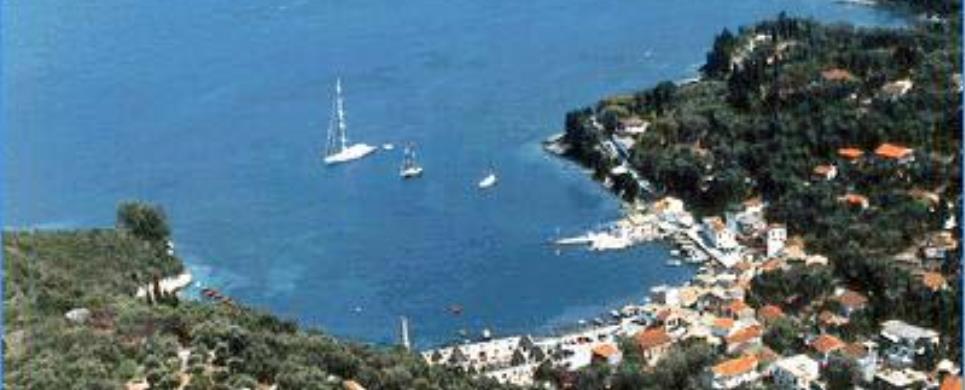
LONGOS (Village) PAXI
Longos nestles amidst dense vegetation, which reaches as far as the harbour. The
shallowness of the water makes it impossible for larger vessels to dock. The beaches
of Levrechio, Marmari, Kipo and Kipiadi are suitable for swimming, windsurfing,
and also camping. If the visitor is looking for unspoilt beaches, Fikia and Glyfada
are worth visiting. Also of interest is the oil-press of the Anemogiannis family,
one of the oldest families of Paxi. The churches of Agios Nikolaos, patron of
sailors, and Zoodochou Pigi, have some frescoes of interest to a visitor.
MAGOULADES (Small town) CORFU
Tel: +30 26630 51294
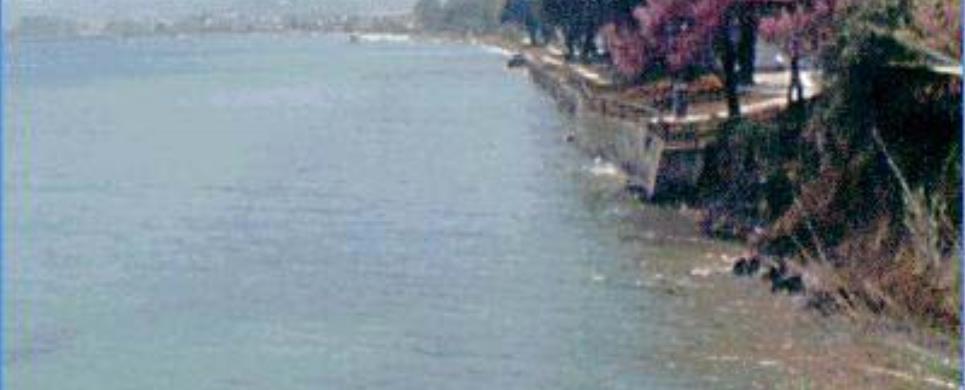
MORAITIKA (Village) CORFU
A seaside tourist resort situated at the mouth of the river Mesoggi. The area
could well have been inhabited since Neolithic times if one is to judge from the
small 3rd century B.C. temple which can be seen high up on the hill. At the river
mouth there are ruins of a Hellenoromaic building.
OTHONI (Island) IONIAN ISLANDS
A small island which can be reached with the caiques that frequently make the
crossing. Sparsely populated, the island is the westernmost point of Greece. It
is also possible by boat to reach Aspri Ammos, where the Cave of Calypso is to
be seen.



PALEOKASTRITSA (Village) CORFU
The whole Paleokastritsa area has been developed for tourism. There are hotels,
rent rooms and summer apartments. The countryside is magnificent. Apart from the
main beach there are narrow paths leading to other smaller coves, suitable for
bathing. The monastery of the Virgin was founded in 1225, though the building
the visitor sees today dates only from the 18th-19th centuries. There is a museum
with Byzantine and post-Byzantine icons. Legend has it that the small island of
Kolovri at the entrance to the bay is a pirate ship which was turned to stone
by the Virgin Mary, in this way protecting the monastery and the local population.
Aggelokastro is the westernmost outpost of the Despotate of Epirus, to which Corfu
belonged until 1267.
This text is cited December 2004 from the Ionian Islands Region General Secretariat URL below, which contains image
PANTOKRATOR (Mountain) CORFU
Mount Pandokrator is 911 metres in height. Small sections of cultivable (but almost
totally abandoned) land are still to be found on its bare, rocky slopes. The Venetians
gave the peak the name Monte San Salvatore. The view from the summit towards Barbati
is incomparable. A monastery is to be found there on the site of an older building
dating from 1372.



PAXI (Island) IONIAN ISLANDS
Paxos, the baby of the Ionian Islands, is a cluster of small islands
and rocky islets, the largest of which are Paxi and Antipaxos .They are located
7 miles south of Corfu,
at a distance of 8 miles from the coast of Epirus
in nort-western Greece and 12 miles from the town of Parga.
Both Paxos and Antipaxos
have a lizard-like, long and narrow shape. The islands cover an area of 19 square
kilometres and 3 square kilometers respectively.
Paxos is an island of endless olive groves and Antipaxos one large
vineyard. The eastern coastlines of the island are smooth, while the west coasts
are bold and abrupt with remarkable natural formations: caves, arches, dome-shaped
forms, sheer cliffs etc. The capital of Paxos is Gaios,
a picturesque village build around a port which is protected by two small islands,
Agios Nikolaos and Panagitsa.
At the northern tip of the island sits beautiful Lakka,
whilst on the east coast nestles the charming village of Loggos.
Today, Paxos has a permanent population of approximately 2,300 inhabitants and
during the summer months, the island welcomes more than 200,000 visitors.
The inhabitants of Paxos are warm and extremely hospitable people
who possess a love for tradition yet embrace all developments of contemporary
Europe. As a result the islands have been declared Cultural Village of Europe
for the year 2004, an institution which aims to make know and preserve village
life across Europe. As part of the celebrations in honour of being the Cultural
Village of Europe, Paxos will be the hosting of many cultural events and pan-European
meetings during 2004.
This text is cited Nov 2003 from the Municipality of Paxi URL below, which contains images
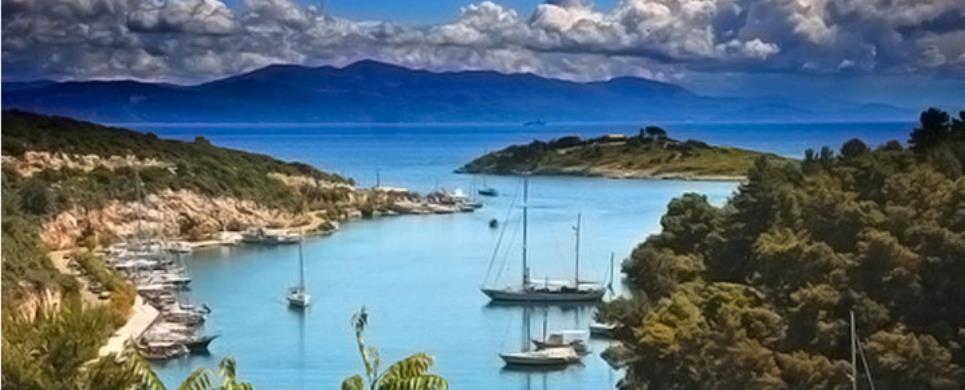
PAXI (Port) PAXI
Gaios is the capital of the island. The harbour is sheltered from the wind and
is shallow and so suitable for smaller boats. The sea is always clean and cool
because of the sea currents. The more northerly part of the harbour, Maneskos,
is deeper. Larger vessels are able to dock here. The name Gaios comes from Agios
Gaios, who brought Christianity to the island. His tomb is in the sanctuary of
the church of the Holy Apostles, where there are some noteworthy frescoes. According
to tradition, soil from the tomb has medicinal properties and can be used in the
treatment of snakebite. The island's most brilliant festival is on 29th June,
when there is a celebration for both the Holy Apostles and Agios Gaios.
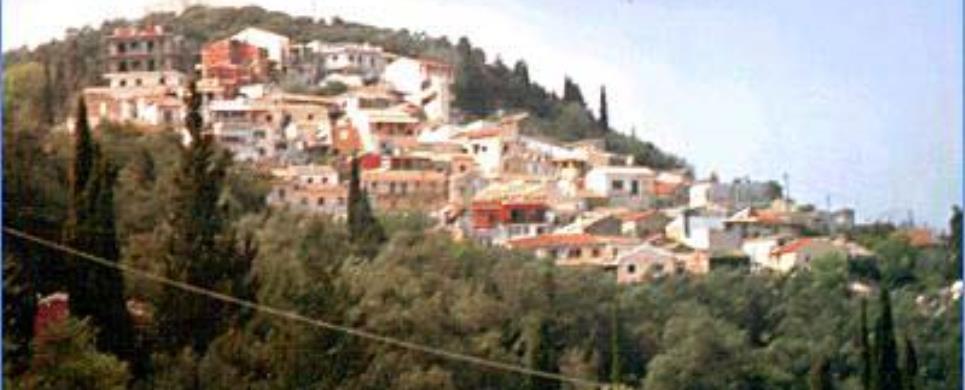
PELEKAS (Village) CORFU
Tel: +30 26610 94211
A charming village situated at the top of Corfu's most beautiful hill. The houses
of the village are painted in different colours and the quaint little streets
are perfect for a peaceful walk. The view of the sunset from the top of the hill
above the village is something the visitor should not miss. Kaiser Wilhelm II
used to come here to enjoy it. The area is also called "The Kaiser's Throne".
From here one can visit the Monastery of the Panagia Myrtiotissa, built in the
14th century. To get to it one has to go along Myrtiotissa Beach. The road to
the monastery is not easy.
PEROULADES (Village) CORFU
Tel: +30 26630 95239
RODA (Port) CORFU
Rhoda as also nearby Acharavi
on the northern part of the island, offer an ideal combination of sea and mountain,
while there have also been many important archaeological finds in the area. The
beach is one of the most beautiful on the island, while the traditional settlement
of Ano Acharavi is distinguished for its architecture.



THINALIO (Municipality) CORFU
The Municipality of Thinali is located in the north of Corfu,
covering the flank of the Pantokrator
Mountain Massif as far as the sea, and comprises eight villages and 39 hamlets.
Its boundary to the north is the sea, where the beach stretches for
several kilometers from Roda
to Acharavi and Almiros,
Agios Spiridon, Apraos
and Kalamaki. It is considered to be one of the most extensive and cleanest beaches
in the Mediterranean, and in set in the scenery of exceptional natural beauty.
The coastal area of Thinali was one of the first in Greece
to develop for tourism, and all facilities one expects to find in a modern town
are available in the region’s centre, Acharavi,
with shops, restaurants, bars and banks supplying all services a tourist might
require.
(text: Hilary Whiton Paipeti)
This text (extract) is cited November 2003 from the Corfu
Villas & Apartments Federation tourist pamphlet (1996).
VELONADES (Village) CORFU
Velonades is a village in the northwest of Corfu,
31 kilometres from Corfu Town.
It is located in verdant surroundings, near several lovely beaches, among them
Peroulades, Saint George and
Sidari.
The prime occupation of the 1860 inhabitants of the community is olive
cultivation and other agricultural activities, but during the summer they provide
services for visiting tourists. Rooms and houses are available for rent in this
traditional village, which also offers amenities such as bars and tavernas serving
local specialities.
The local people have preserved the traditions of the area, fro example
the famous festival of the Church of the Prophet Elias, which is held on the 20th
of July. The celebrations begin the evening before, and thousands of people, both
Corfiots from all over the island and foreigners, gather for the event.
Visitors who stay in Velonades are sure to enjoy the sheer tranquility
of the area, coupled with the warm hospitality of the local people.
(text: Hilary Whiton Paipeti)
This text (extract) is cited November 2003 from the Corfu
Villas & Apartments Federation tourist pamphlet (1996).
VIDO (Small island) CORFU
A green paint stroke escaped the painting of Corfu
and fell into the sea. Such was the creation of Vido Island, known since antiquity
by the name Ptychia or the island of Hera, referred to by Thucydides, Ptolemaeus
and other authors. Vido owes its present name to the French who occupied the island
in 1830.
With its sloping grounds, rocky coast, two wonderful beaches with
blue-green waters and a self-growing forest with extraordinary flora and rare
fauna, Vido presents a unique alternative for an unforgettable daylong excursion.
Situated at a distance of 1200 m from Corfu
town, it covers a surface of 550.000 square metres. The island can be accessed
by a boat, which leaves the Old Port at Spilia at regular hours. The completion
of Vidos’ development and promotion is one of the main targets ANEDK pursues.
The Municipality of Corfu has financed a series of important projects
on the island, like the restaurant (which can serve approximately 100 persons)
in idyllic surroundings, as well as two refreshment kiosks, one on each beach.
These facilities accommodate bathers, the young visitors staying at the Municipal
Camping Site every year and foreign guests of the Municipality of Corfu.
This text is cited May 2003 from the Corfu Municipality Development Enterprise URL below, which contains images.
Receive our daily Newsletter with all the latest updates on the Greek Travel industry.
Subscribe now!